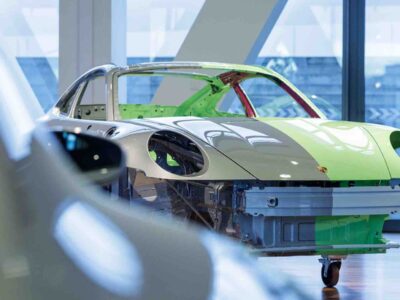The Port of San Diego, one of America’s largest container ship ports, has announced the adoption of a new clean air policy, which was originally proposed in July 2021. The plan, known as the Maritime Clean Air Strategy (MCAS), outlines a pathway to transition the port’s machinery from diesel-powered to electric in an effort to reduce greenhouse gas emissions.
MCAS aims to make the Port of San Diego 100% emission-free by 2030, putting it ahead of the 2035 deadline required for entirely diesel-free machinery mandated for Los Angeles and Long Beach, and fifteen years in advance of the California statewide deadline.
The Port of San Diego is amongst the top 30 of the United States’ largest ports, bringing in 3 million metric tons of cargo per annum, equating to over 820,000 individual containers per year, which vary in volume. It is California’s third most trafficked port.
Strategically positioned on the Pacific Coast of southern California, major imports are processed through the port from Asia and Latin America, primarily. It serves as the primary entry point for a number of automobile companies including Honda, Nissan, Mitsubishi, and Mazda. Recently, the port also was awarded a twenty-four and a half year lease with Dole and will be the primary port of entry for the company’s banana imports.
Currently, the Port of San Diego uses tens of thousands of vehicles to assist in logistical operations. These include the more commonly thought of trucks and generators, but also cranes, drayage trucks, forklifts, and tugboats. Gradually, these will be phased out and electric-powered, emission-free vehicles will be used instead. By 2026, MCAS will require that 40% of the freight trucks entering the terminals to be emission-free. It is yet to be determined how this will be tracked.
Crowley Shipping announced a plan to roll out an all-electric tugboat in 2023 in the port of San Diego. Thus, while most consumers may associate electric vehicles (EV) with their personal automobiles, EV’s may begin to appear in more places than the roadways.
One implication of the new plan is to increase the amount of “shore power” used. Shore power refers to the electricity provided by the port itself, and transitively the regional electric grid, rather than an external power source like diesel. Increasing shore power consistently could have major benefits in the way of emission reduction. Notably, Dole Foods already does use shore power when at the port.
The adoption of MCAS is to benefit the global community as well as those who live in immediate proximity to the port and have been adversely affected by potent diesel emissions. Michael Zucchet, San Diego Port Commissioner Chair, says that the plan is being implemented “Primarily because of the health impacts on the portside community [that is] unacceptable.” Zucchet added that it will “take a lot of work to get there” but that his team is “committed to doing it.”
In the five-hour committee hearing where MCAS was adopted, Commissioner Sandy Naranjo spoke of how the diesel emissions have negatively impacted her own health as a resident in direct proximity to the port. After suffering an extreme asthma attack at age three, she says her issues have continued through her life, as they have for many other working-class families across the country who live in low-income areas next to ports, power plants or factory regions. “It’s disturbing that 31 years after my diagnosis … children of color that live in our portside environmental justice communities are still being diagnosed with severe asthma above the San Diego County average,” she remarked.
Critics of MCAS argue that the strategy does not provide enough measurable metrics to track progress in the coming years. One environmental advocate warned of the dangers of such ambiguity in the path forward, saying without meaningful goalposts, the port could be tempted to take on lucrative contracts that could set back emission reduction progress. Although immediate critics also expressed concern over the potential for job loss, there have not yet been any public announcements by the Port of San Diego regarding harmful or beneficial impacts on port employment. Advocates of the plan, including environmentalists, commissioners members and political economists say the moment for action is fleeting and action must be taken. Diane Takvorian, executive director of the Environmental Health Coalition, says the transition will also trigger state-provided funds for electrification saying “the time is now.” She continued by saying that there is currently an exceptional “emphasis on funding for heavy-duty transition to zero-emission vehicles.”





